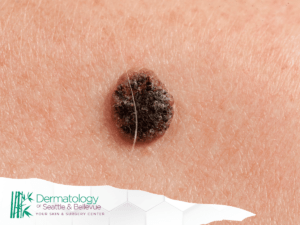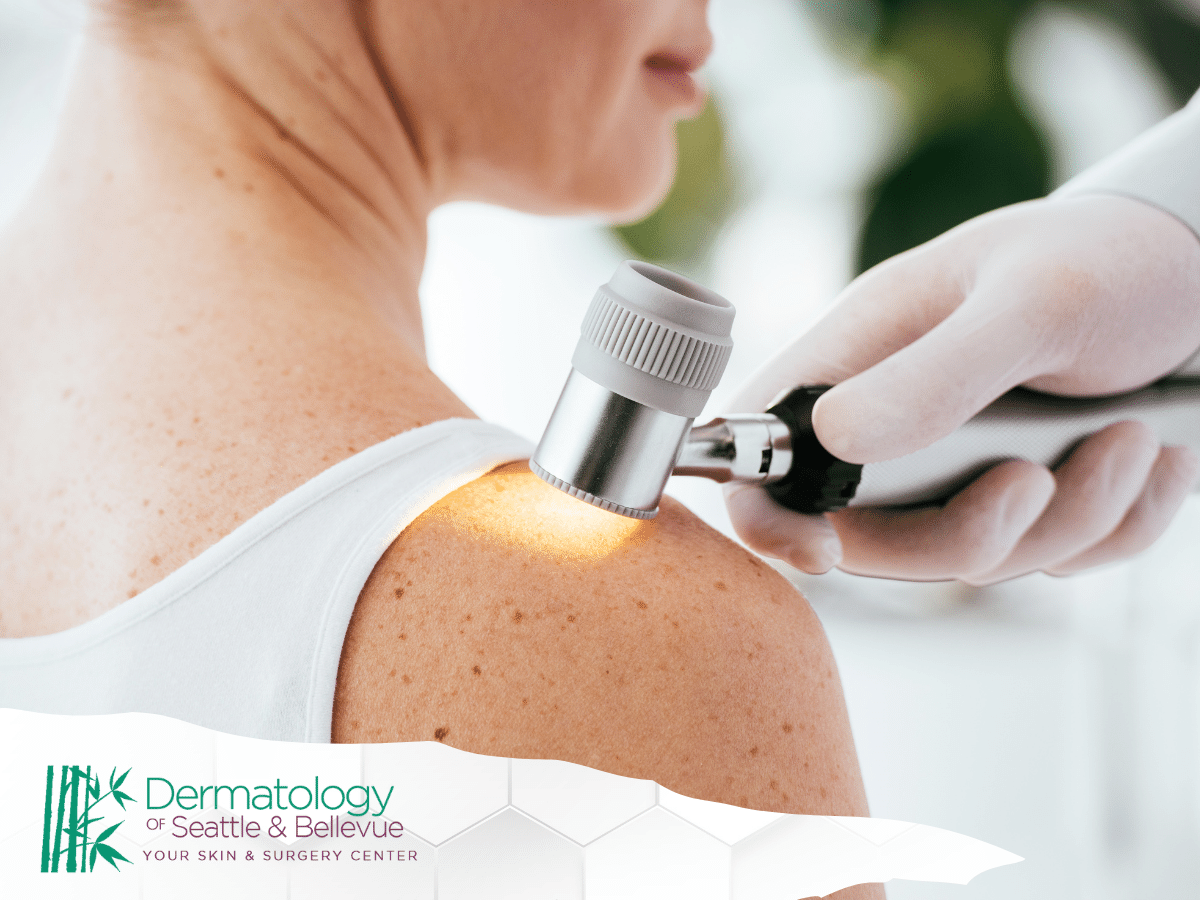Squamous cell carcinoma (SCC) is a common type of skin cancer that arises from the epidermis’s outermost layer, the squamous cells.
One critical aspect of managing SCC is understanding its growth rate, which can impact treatment decisions and prognosis.
In this article, we’ll delve into the factors influencing the growth rate of SCC, its implications for diagnosis and treatment, and strategies for effective management.
Can Squamous Cell Carcinoma Appear Suddenly?
Squamous cell carcinoma (SCC) can indeed appear suddenly, catching individuals by surprise. While some skin cancers develop gradually over time, SCC may manifest relatively quickly, seemingly out of nowhere.
Here, we explore the phenomenon of SCC’s sudden onset and its implications for early detection and management.
Understanding Sudden Appearance and Rapid Growth:
SCC lesions can exhibit rapid growth, appearing seemingly overnight or over a short period. Factors such as genetic predisposition, cumulative sun exposure, and immune suppression may contribute to the accelerated development of SCC.
Precursor Lesions
Sometimes, SCC may arise from pre-existing skin conditions or precursor lesions, such as actinic keratoses (AKs) or Bowen’s disease. These precancerous lesions may undergo malignant transformation, leading to the sudden appearance of SCC.
Immunosuppression
Individuals with compromised immune systems, either due to medical conditions or immunosuppressive medications, are at increased risk of developing aggressive SCCs. Immune suppression can impair the body’s ability to recognize and eliminate cancerous cells, allowing tumors to proliferate rapidly.
Sun Damage
Prolonged exposure to ultraviolet (UV) radiation from the sun or artificial sources such as tanning beds can accelerate the development of SCC. Sun-damaged skin may harbor latent cancerous changes that can progress rapidly under certain conditions, leading to the sudden onset of SCC.
Genetic Factors
Genetic predisposition may also play a role in the sudden appearance of SCC. Individuals with a family history of skin cancer or genetic syndromes associated with increased cancer risk may be more susceptible to developing SCC at a younger age or with rapid progression.
Implications for Early Detection and Management

- Vigilant Monitoring: Given the potential for SCC to appear suddenly, regular skin examinations are essential for early detection.
Individuals should monitor their skin for any new or changing lesions, including raised growths, scaly patches, or non-healing sores, and promptly report any concerning findings to a healthcare provider. - Dermatological Evaluation: Dermatologists or healthcare providers should promptly evaluate suspicious skin lesions. A thorough clinical examination, including dermoscopic evaluation if necessary, can help determine the nature of the lesion and guide further management.
- Biopsy and Histopathological Examination: A skin biopsy may be performed to confirm the diagnosis if SCC is suspected. Histopathological examination of the biopsy specimen allows for the assessment of tumor characteristics, including degree of differentiation, invasion depth, and presence of high-risk features.
- Multidisciplinary Approach: Management of SCC often requires a multidisciplinary approach involving dermatologists, dermatopathologists, oncologists, and other specialists. Depending on the extent and characteristics of the tumor, treatment options may include surgical excision, Mohs micrographic surgery, radiation therapy, topical therapies, or targeted systemic agents.
While squamous cell carcinoma can appear suddenly, early detection and prompt management are key to achieving favorable outcomes. Individuals should remain vigilant about changes in their skin and seek medical attention if they notice any new or suspicious lesions.
Factors Influencing Growth Rate
Several factors can influence the growth rate of squamous cell carcinoma
- Tumor Location: SCC can develop on any part of the body but is most commonly found on sun-exposed areas such as the face, ears, neck, scalp, and hands. Tumors in these areas may grow more rapidly due to increased sun exposure.
- Cancer Size: Larger SCC lesions tend to grow faster than smaller ones. The growth rate may also depend on the depth of invasion into the skin and underlying tissues.
- Histological Features: Certain histological features of SCC, such as tumor thickness, degree of differentiation, and presence of mitotic activity, can influence its growth rate and aggressiveness.
- Immune Response: The body’s immune system plays a crucial role in controlling the growth of skin cancer cells. Immunocompromised individuals, such as those with HIV/AIDS or undergoing immunosuppressive therapy, may experience more rapid SCC growth.
- Genetic Factors: Genetic mutations and alterations can affect the growth rate and behavior of SCC. Understanding the tumor’s genetic profile may help predict its aggressiveness and response to treatment.
Implications for Diagnosis and Treatment
The growth rate of squamous cell carcinoma can have significant implications for diagnosis and treatment
- Early Detection: Rapidly growing SCC lesions may be more noticeable and prompt patients to seek medical attention sooner. Early detection allows for timely intervention and improves the chances of successful treatment.
- Treatment Planning: The growth rate of SCC can influence the choice of treatment modalities. Rapidly growing tumors may require more aggressive interventions, such as surgical excision, Mohs micrographic surgery, or radiation therapy, to ensure complete removal and reduce the risk of recurrence.
- Prognosis: The growth rate of SCC can impact prognosis and long-term outcomes. Tumors that exhibit rapid growth may have a higher risk of local recurrence, metastasis, and poor survival rates.
Management Strategies
Effective management of SCC involves addressing its growth rate through various strategies:
Sun Protection:

Proper sun protection measures, such as wearing sunscreen, protective clothing, and seeking shade during peak hours, can help prevent SCC development and slow the growth of existing lesions.
Regular Skin Examinations:
Routine skin examinations by a dermatologist are essential for monitoring SCC lesions and detecting any changes in size, shape, or color that may indicate rapid growth or malignant transformation.
Early Intervention:
Prompt treatment of SCC lesions, especially those exhibiting rapid growth or high-risk features, can improve outcomes and reduce the need for more extensive interventions later on.
Multidisciplinary Care:
Collaborative care involving dermatologists, oncologists, surgeons, and other healthcare professionals is essential for the comprehensive management of SCC. A multidisciplinary approach allows for tailored treatment plans based on the individual patient’s needs and preferences.
Monitoring the Growth Rate of Squamous cell carcinoma (SCC)
Monitoring the growth rate of squamous cell carcinoma (SCC) is crucial for evaluating disease progression, guiding treatment decisions, and assessing prognosis. Here, we explore the importance of monitoring SCC growth and the methods used for this purpose.
H3 Importance of Monitoring Growth Rate
- Treatment Planning: Monitoring the growth rate of SCC helps healthcare providers determine the most appropriate treatment strategy. Rapidly growing cancers may require more aggressive interventions, such as surgical excision or radiation therapy, to ensure complete removal and prevent recurrence.
- Early Detection of Recurrence: Regular monitoring allows for early detection of SCC recurrence or progression. Identifying lesion size, shape, or color changes can prompt timely intervention and improve treatment outcomes.
- Prognostic Assessment: The growth rate of SCC can provide valuable prognostic information. Tumors that exhibit rapid growth may have a higher risk of local recurrence, metastasis, and poor survival rates, necessitating closer monitoring and more aggressive management.
Methods for Monitoring Growth Rate
- Clinical Examination: Regular skin examinations by a dermatologist or healthcare provider are essential for monitoring SCC growth. Visual inspection of lesions allows for assessing size, shape, color, and other changes indicative of cancer progression.
- Photography: Serial photography of SCC lesions can objectively document changes over time. Comparing photographs taken at different intervals allows for a more accurate growth rate assessment and helps detect subtle changes that may not be apparent during clinical examination alone.
- Imaging Studies: Imaging modalities such as ultrasound, computed tomography (CT), magnetic resonance imaging (MRI), or positron emission tomography (PET) scans may be used to evaluate SCC lesions and assess their growth. These imaging studies can provide detailed information about cancer size, invasion depth, and nearby structures’ involvement.
- Biopsy and Histopathological Examination: Biopsy of SCC lesions followed by histopathological examination allows for definitive diagnosis and assessment of cancer characteristics. Histological features such as tumor thickness, degree of differentiation, and presence of mitotic activity can provide valuable insights into cancer growth rate and aggressiveness.
- Digital Dermoscopy: Digital dermoscopy involves using a handheld device equipped with a magnifying lens and camera to examine skin lesions in detail. This non-invasive technique allows for the visualization of morphological features of SCC lesions and facilitates longitudinal monitoring of changes over time.
- Molecular Biomarkers: Emerging research has identified molecular biomarkers associated with SCC growth and progression. Analysis of these biomarkers may provide additional prognostic information and guide treatment decisions.
Conclusion:
In conclusion, understanding the growth rate of squamous cell carcinoma (SCC) is paramount for effective diagnosis, treatment, and prognosis.
While SCC can sometimes appear suddenly, vigilant monitoring and early intervention are crucial for optimal outcomes.
Regular skin examinations, imaging studies, biopsy, and molecular analysis are key in monitoring SCC growth and guiding treatment decisions.
Collaborative care involving dermatologists, oncologists, and other specialists ensures comprehensive management tailored to individual patient needs.
By staying proactive and addressing SCC growth promptly, we can improve treatment outcomes, minimize recurrence risk, and ultimately enhance the quality of life for individuals affected by this common skin cancer.
Remember, if you notice any new or changing skin lesions, don’t hesitate to seek medical attention for proper evaluation and management. Your health and well-being are our top priorities.
Final Thoughts:
This blog is for informational purposes only. For personalized advice and treatment, please consult healthcare professionals. Each individual’s condition is unique and requires assessment by a qualified medical professional.









